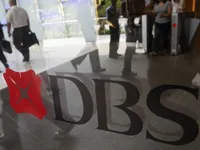Singapore
What you need to know about Singapore banks
What you need to know about Singapore banks
So loan growths are expected to moderate significantly in 2H12, but which bank remains a relative outperformer in uncertain times?
DBS establishes USD 5b commercial paper programme
Guess who DBS selected as dealers under the programme?
Co-operative Banking Group seals deal with Teradata and Microgen
This is Teradata’s first partner bid with Microgen.
Gov’t support dispels big impact of new rating criteria to AsiaPac banks
And the outlooks on 79% of the banks in the region are stable under the new criteria.
Asia’s business bankers concerned about liquidity shocks from EU crisis
Find out what Asia’s heads of business banking including HSBC’s Noel Quinn, UOB’s Eric Tham and Macquarie Securities' Ismael Pili have to say about the EU crisis and Asia’s banks.
DBS mulls adding staff by 10%
The lender aims to take advantage of yuan's rise to become major offshore trader of the currency.
OCBC invests S$20 M in account opening system in Singapore
OCBC Bank launched of its new S$20 million account opening system at all 56 OCBC Bank branches in Singapore.
Singapore's bank lending growth slows in Oct.
Singapore dollar lending in October grew a modest 0.3 percent to 406.5 billion Singapore dollars only.
Will the SEPA end date change anything for Asian Banks?
“Now this is not the end. It is not even the beginning of the end, but it is, perhaps, the end of the beginning.” Winston Churchill, 10 November 1942 There is no doubt that regulation is a driving force in the payments industry and will be so for the foreseeable future. At the moment however, many minds are focused on the Single Euro Payments Area (SEPA) End Date regulation. Formally known as the European Commission’s proposal for a regulation establishing technical requirements for Credit Transfers and Direct Debits in Euros and amending regulation (EC) No 924/2009, the SEPA End Date regulation promises to deliver a clear deadline for migrating domestic payments instruments on to SEPA standards. This deadline is important because September 2011 migration rates are far from matching set expectations, with only 21% migration for SEPA Credit Transfers (SCTs) and just above 0.1% for SEPA Direct Debits (SDDs) having taken place so far. In the original proposal, full migration to SCTs will occur 12 months after the regulation goes into force and for SDDs, 24 months after enforcement. Member States are permitted to set earlier dates than those outlined in the proposal. Since the proposal was published and debate has taken place at the EU Parliament, most observers now believe a single migration End Date will be imposed, probably for the end of January 2014 for both SCT and SDD migration, that is 24 months after the regulation is voted upon. The next few weeks will still see debates around smaller issues regarding the obligations of end users, consumer protection, etc. The Regulation itself is bound to be voted upon and published beginning of next year. There is therefore not much time for reflection on next steps. Act Swiftly, Act Decisively Although the SEPA advent will hit Eurozone and European banks at first, side effects will be felt for Asian banks running operations in the SEPA zone or transacting in EUR with European banks. This At a time when the SEPA landscape is still being shaped with the forthcoming End Date Regulation, Asian banks should start assessing how they will be impacted now. Some steps to take include:
Why banking is changing for good
Imagine having instant and total control of your money. To spend, save, invest and pay whenever you need to just by tapping your finger or saying the word. Today, by and large, you still have to come to your financial service provider, be it online, on a mobile phone or in the branch. But mobile device sophistication, network speed and innovation are converging to place banking straight into your hands. For consumers these developments are good news as they will have greater control of their money than ever before. For banks, however, they represent one of the biggest and most fundamental shifts in the rules of engagement that we have seen in a lifetime. In the future the basis of competition for banks will not be products or channels, but how well they understand the needs of their customers. It will be about how much value they can add to people’s lives. We live differently now. Together, technology and customer demand are driving a complete transformation of how banking is done. There is a growing global tribe of consumers who want anytime anywhere access to services and banking is no exception. These consumers are looking for personalised experiences and they want to be treated as individuals, not aggregated together. The implication of this is that banks cannot continue as before and expect business to stay the same.Banks have to become not only innovators, but also proactive in coming up with solutions that meet customers’ needs, predicting those needs before customers know they have them. This means banks have to transform from utilities into service organisations that offer a great lifestyle experience. I believe that banks now face a choice. Either to continue as they are and see new competitors infringe upon their core business – or innovate and become market disruptive, expanding those same boundaries to take banking into new territory. There is real scope in the next few years for banking to evolve beyond the basics of savings and lending to a much broader set of services. One obvious example is unlocking data in order to offer customers personalised, value-added services – alerting them to nearby deals or new and better ways to grow their wealth. There is no point pretending a transformation on this scale is going to be easy. Banks are large and complex organisations not traditionally focused on innovation or speed-to-market. Today, many face issues getting the right technology for their customers. It is a long leap from there to the brave new world of banking. In the future, banks will have to become serial innovators, move with the urgency of start-ups and look for ideas everywhere. The task is not only to meet customers’ needs but to capture their imagination. It is a challenge but – in an increasingly digitised world – not one exclusively faced by banks. Going forward, the industry has to pay more attention to how banking fits into different contexts – what it lets people do. In many ways, we have only just scratched the surface of how banking is going to change. As the boundaries of consumer banking become increasingly blurred, banks will need to forge new partnerships to meet customer demand. Banks need to study not so much each other, but other industries more adept at engaging and inspiring consumers. They will need to be prepared to form strategic alliances outside of the traditional confines of banking to reach people in the spaces where life is now led.
Singapore banks slash job perks for expats
Blame it on supply and demand as more senior bankers now want to have Asia experience on their CV.
Why are the big consultancies silent on the worldwide impact of FATCA on non US citizens?
Find out three reasons, in relation to Duncan Edwards' commentary on Foreign Account Tax Compliance Act.
Singapore banks warned on threats from foreign currency loans
The central bank warns of a sudden spike in global risk aversion that can hurt the Singapore banking system.
Temasek and Khazanah hire banks for S$5b property development loans
Eight lenders will contribute to the five-year bullet facility, according to Bloomberg.
OCBC Bank invests $20m in Singapore
56 OCBC branches will now have a new account opening system.
Temasek may buy BofA's shares in China Construction Bank Corp
But Temasek’s spokesperson neither confirms nor denies the ‘market speculation'.
OCBC launches designer credit cards
There are over 130 designs available for ‘FRANK by OCBC’ credit cards.













 Advertise
Advertise







